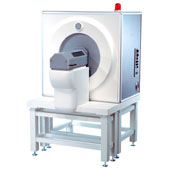Computed Tomography: Difference between revisions
| Line 17: | Line 17: | ||
* '''Rapid Three-Dimensional Phenotyping of Cardiovascular Development in Mouse Embryos by Micro-CT with Iodine Staining.'''<ref><pubmed>20190279</pubmed></ref> "Our method benefits from the ease of sample preparation, low toxicity, and low cost. Furthermore, we show how multiple cardiac defects can be demonstrated by micro-CT in a single specimen with a known genetic lesion. Indeed, a previously undescribed cardiac venous abnormality is revealed in a PlexinD1 mutant mouse." | * '''Rapid Three-Dimensional Phenotyping of Cardiovascular Development in Mouse Embryos by Micro-CT with Iodine Staining.'''<ref><pubmed>20190279</pubmed></ref> "Our method benefits from the ease of sample preparation, low toxicity, and low cost. Furthermore, we show how multiple cardiac defects can be demonstrated by micro-CT in a single specimen with a known genetic lesion. Indeed, a previously undescribed cardiac venous abnormality is revealed in a PlexinD1 mutant mouse." | ||
* '''Virtual histology of transgenic mouse embryos for high-throughput phenotyping.'''<ref><pubmed>16683035</pubmed>| [http:// | * '''Virtual histology of transgenic mouse embryos for high-throughput phenotyping.'''<ref name=PMID16683035><pubmed>16683035</pubmed>| [http://www.plosgenetics.org/article/info:doi/10.1371/journal.pgen.0020061 PLoS Genetics]</ref> "We present a novel, rapid, and inexpensive method for obtaining high-resolution virtual histology for phenotypic assessment of mouse embryos. Using osmium tetroxide to differentially stain tissues followed by volumetric X-ray computed tomography to image whole embryos, isometric resolutions of 27 mum or 8 mum were achieved with scan times of 2 h or 12 h, respectively, using mid-gestation E9.5-E12.5 embryos." | ||
|} | |} | ||
Revision as of 11:30, 17 August 2010
Introduction
Computed Tomography or computed axial tomography (CAT or CT scan) began in 1970's using x-ray and a computer to produce images either as individual slices or reconstructed to give three dimensional (3D) views of specific anatomical regions or structures.
In embryology, the technique of micro-CT (μCT) has recently begun to become relevant in the analysis of normal development features and those seen in genetically modified animal models, such as the mouse (More? Mouse Development).
Other potential developmental research imaging techniques include: positron emission tomography (PET), single photon emission computed tomography, magnetic resonance imaging, computed tomography, optical bioluminescence, fluorescence and high frequency ultrasound.
- Links: Flash - Computed Tomography | Quicktime - Computed Tomography | Category:Computed Tomography | original page
Some Recent Findings
|
Early Mouse Development MicroCT
Mouse E9.5[3]
Mouse E10.5[3]
Mouse E10.5 head [1]
Mouse E11.5[3]
Mouse E11.5[3]
Mouse E12.5[3]
Mouse E14.5[4]
Movies
| Flash version | |
| Mouse E11.5 microCT scan[5] |
References
Search Pubmed
Search Pubmed: Embryo Computed Tomography | Computed Tomography | Micro-computed tomography apparatus
External Links
- Duke Center for In Vivo Microscopy A 4D Atlas and Morphologic Database
- Normal C57BL/6 mouse embryos from embryonic day E10.5 to E19.5
- Normal C57BL/6 mouse neonates from post-natal day 0 to 32
- Mutant mouse embryos with cardiac septation defects (conditional ablation of the Smoothened receptor gene, Mef2C-AHF-Cre;Smoflox/- mutants)
- University of Calgary 3D Morphometrics Lab
Glossary Links
- Glossary: A | B | C | D | E | F | G | H | I | J | K | L | M | N | O | P | Q | R | S | T | U | V | W | X | Y | Z | Numbers | Symbols | Term Link
Cite this page: Hill, M.A. (2024, April 19) Embryology Computed Tomography. Retrieved from https://embryology.med.unsw.edu.au/embryology/index.php/Computed_Tomography
- © Dr Mark Hill 2024, UNSW Embryology ISBN: 978 0 7334 2609 4 - UNSW CRICOS Provider Code No. 00098G

![Mouse E9.5[3]](/embryology/images/thumb/b/b2/Mouse-E9.5.jpg/90px-Mouse-E9.5.jpg)
![Mouse E10.5[3]](/embryology/images/thumb/8/89/Mouse_CT_E10.5.jpg/90px-Mouse_CT_E10.5.jpg)
![Mouse E11.5[3]](/embryology/images/thumb/b/b2/Mouse_CT_E11.5.jpg/90px-Mouse_CT_E11.5.jpg)
![Mouse E12.5[3]](/embryology/images/thumb/d/da/Mouse_CT_E12.5.jpg/90px-Mouse_CT_E12.5.jpg)
![Mouse E14.5[4]](/embryology/images/thumb/f/fe/Mouse_CT_E14.5.jpg/77px-Mouse_CT_E14.5.jpg)